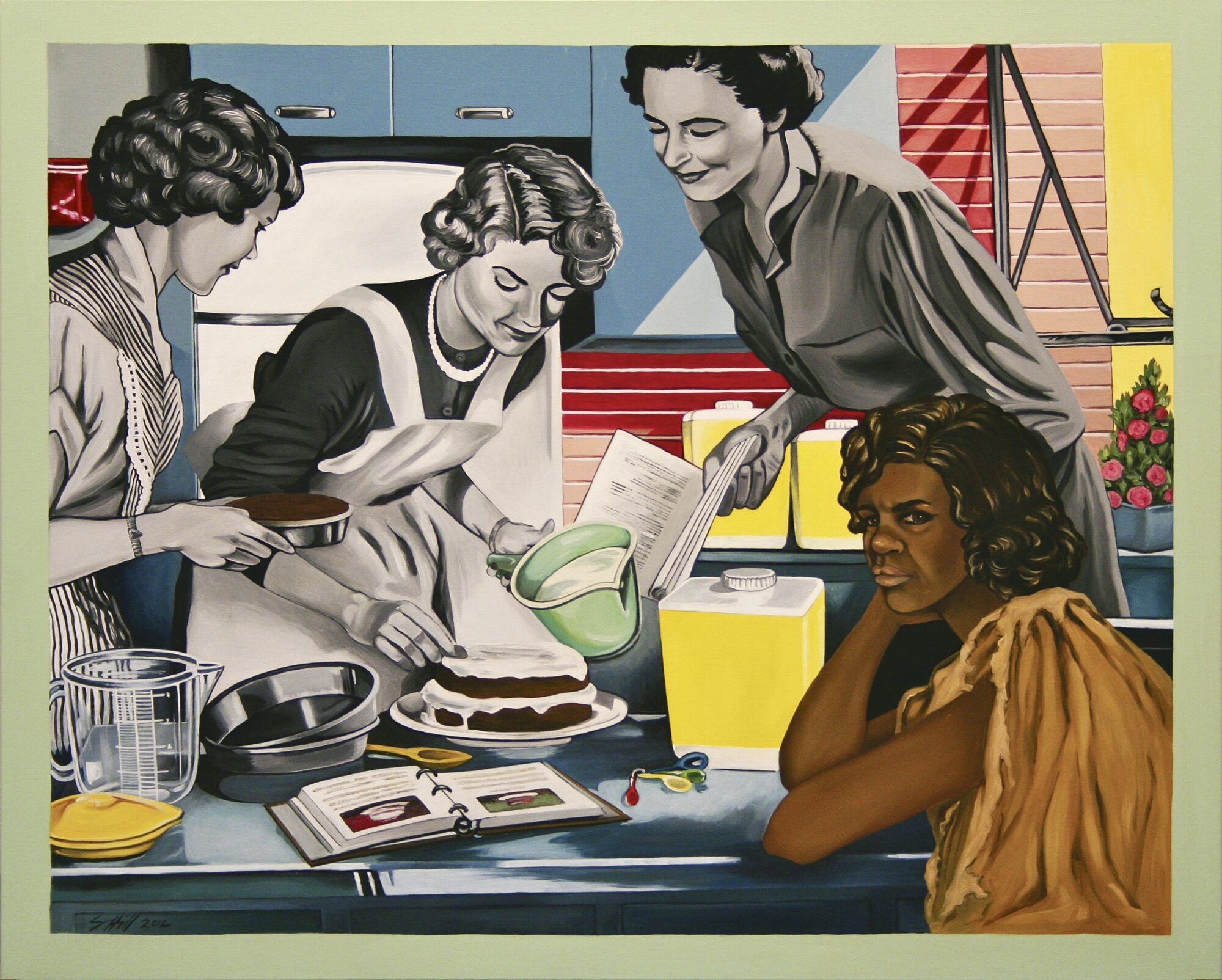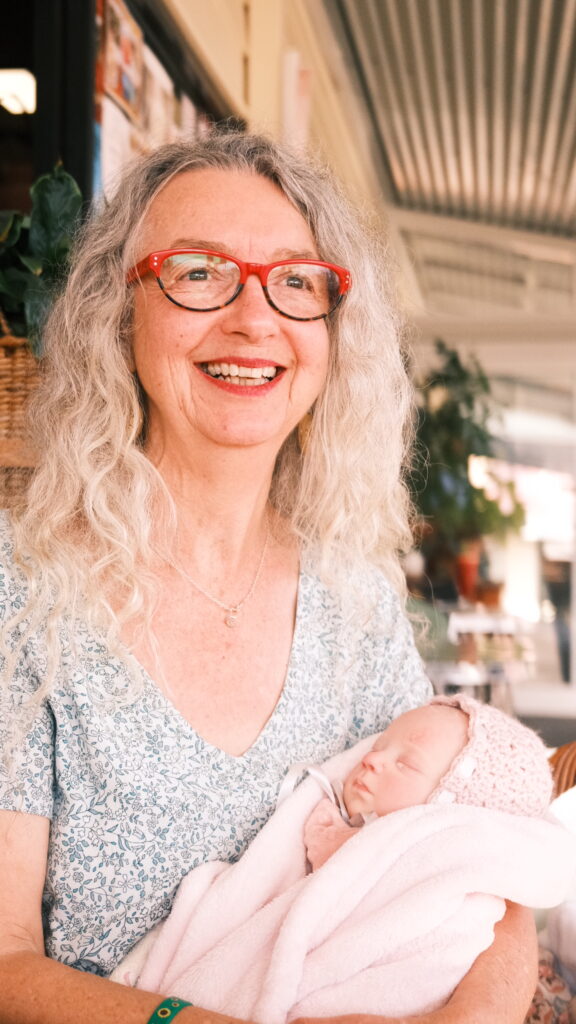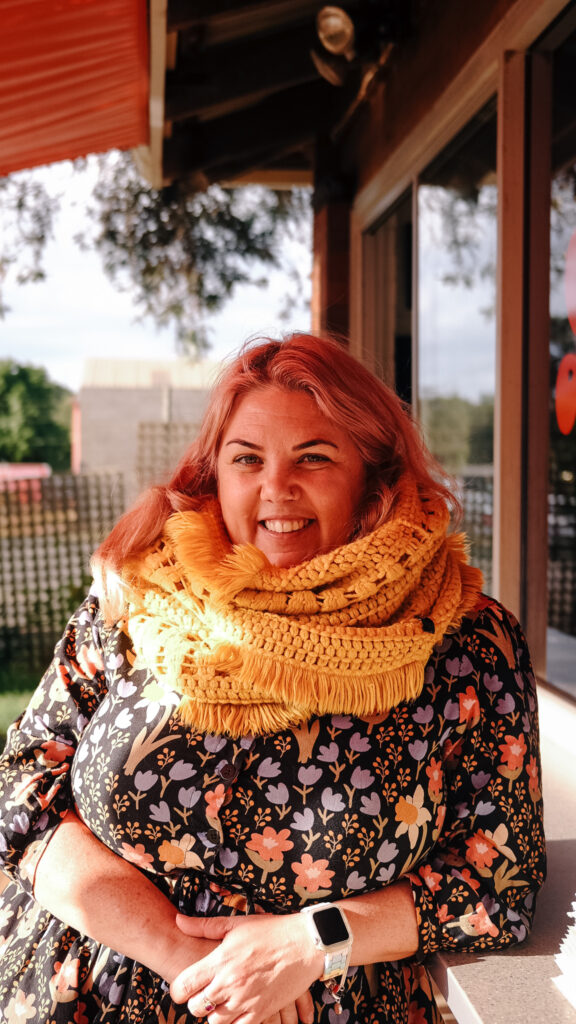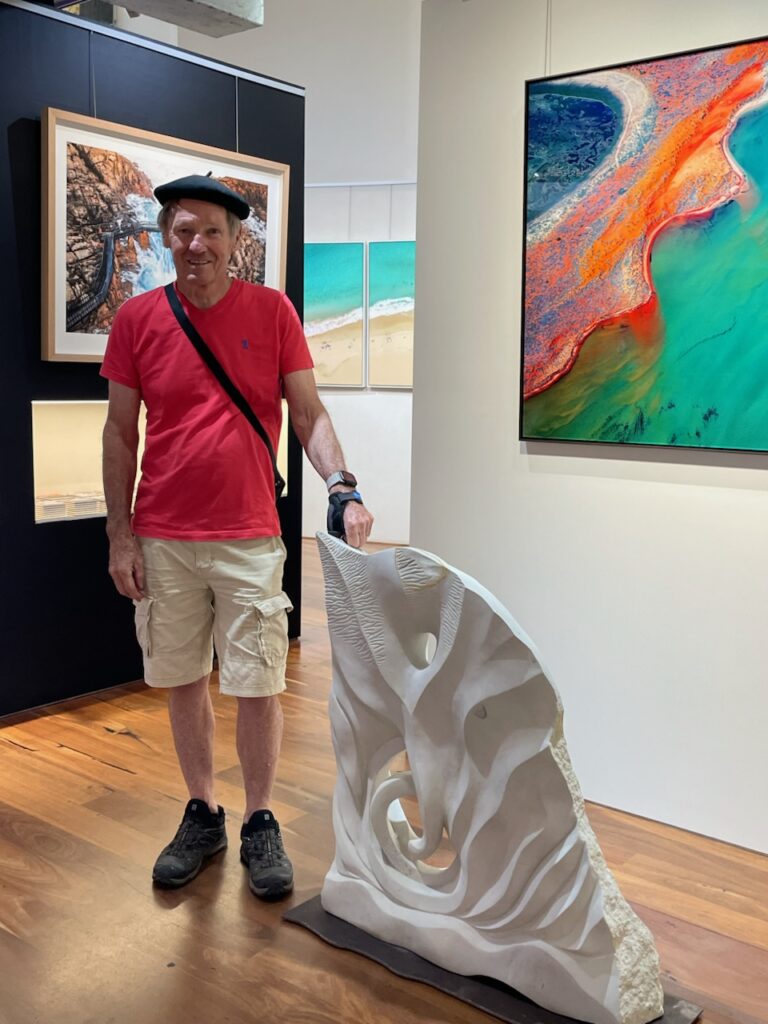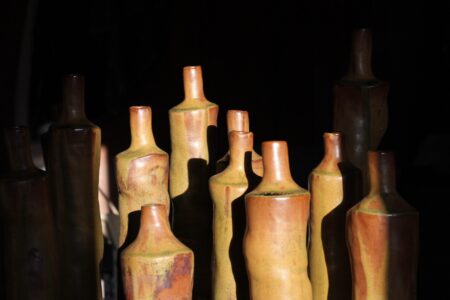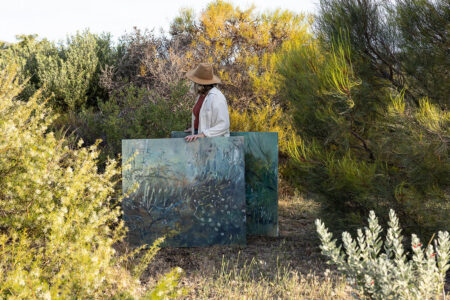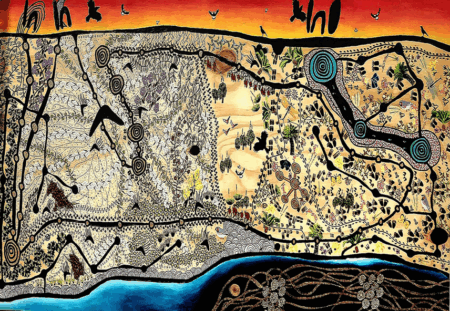Mental Health Awareness Month 2025
Here in regional WA, we know the reality of mental health all too well. In our own communities, we see suicide rates higher than in metro areas, significantly affecting the lives of Indigenous people, young men, and the elderly. With mental health professionals often hours away, we’re facing a crisis that hits close to home.
This Mental Health Awareness Month, we’re exploring an often overlooked path to wellbeing – the power of creativity. While exercise is well-documented for improving mental health, artistic experiences can offer another route to healing.
We spoke with five regional artists who discovered that creative expression became their therapy. In their workshops, studios, and community spaces, they challenge traditional notions of mental health support. Their stories demonstrate that where clinical resources may be scarce, the simple act of creating can become a powerful lifeline, offering both hope and healing.
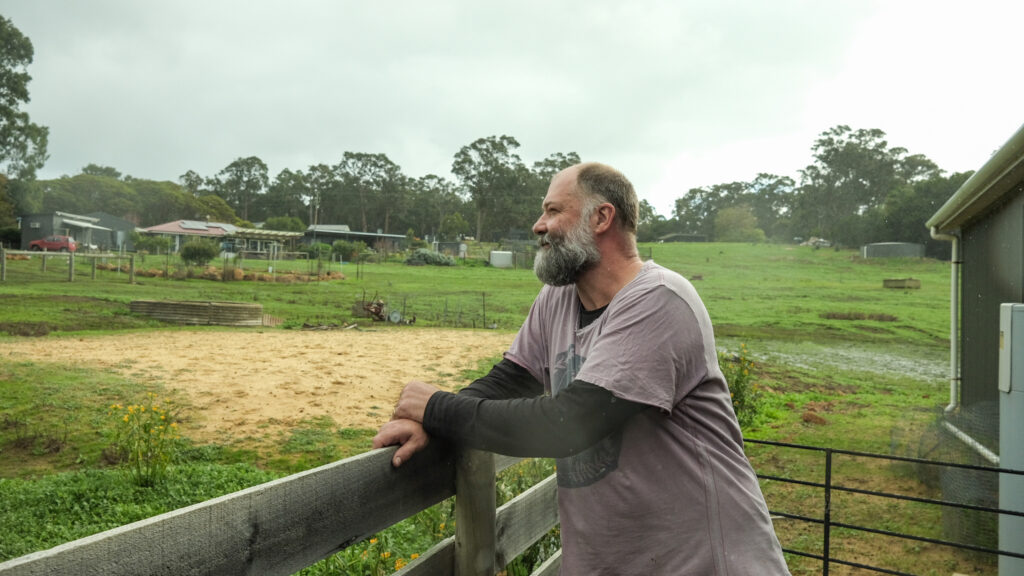
Jeff – Painter
Jeff’s journey back to art began in grief. After losing his wife Pauline to cancer in October 2023, the foundations of his world shifted. “Everything you thought you knew about the world suddenly seems wrong. I’d been with Pauline since my 20s. Life changes just like that.” he reflects.
Art had always been part of his story. He grew up with an artist mother in the North West and studied Fine Arts at WAIT (Curtin). But life took him down a different path, through IT work and later wine management. Despite the detours, he never stopped creating, constantly drawing, painting, and making t-shirts on the side.
When grief overtook him after Pauline’s passing, art became his lifeline. After leaving his job at the winery, he took six months to immerse himself in painting. Now, he’s producing prolifically – with over twenty pieces ready and more in progress for the upcoming Open Studios event in September.
The solitude of creation has become therapeutic. “Sometimes I listen to music. Sometimes I sit in silence. The solitude part has been beneficial,” he shares. Yet the Open Studios event has also offered goals through structure, deadlines, and opened up connections with other artists.
19 months after the loss of his wife, Jeff’s pain remains raw. “I am sad that Pauline can’t see that I’m doing what I love,” he admits. Yet through art, he’s finding his way forward. The book ‘Your Brain on Art’ by Susan Magsamen and Ivy Ross, has become a source of validation and understanding for Jeff. Its scientific evidence showing how creative practice reduces stress hormones resonates with what Jeff has experienced firsthand.
Jeff’s message to others is clear: art is often about the process, not the product. While some people might be naturally gifted, everyone can participate in the healing power of creativity. “If you enjoy it, do it. Indulge yourself,” he encourages.
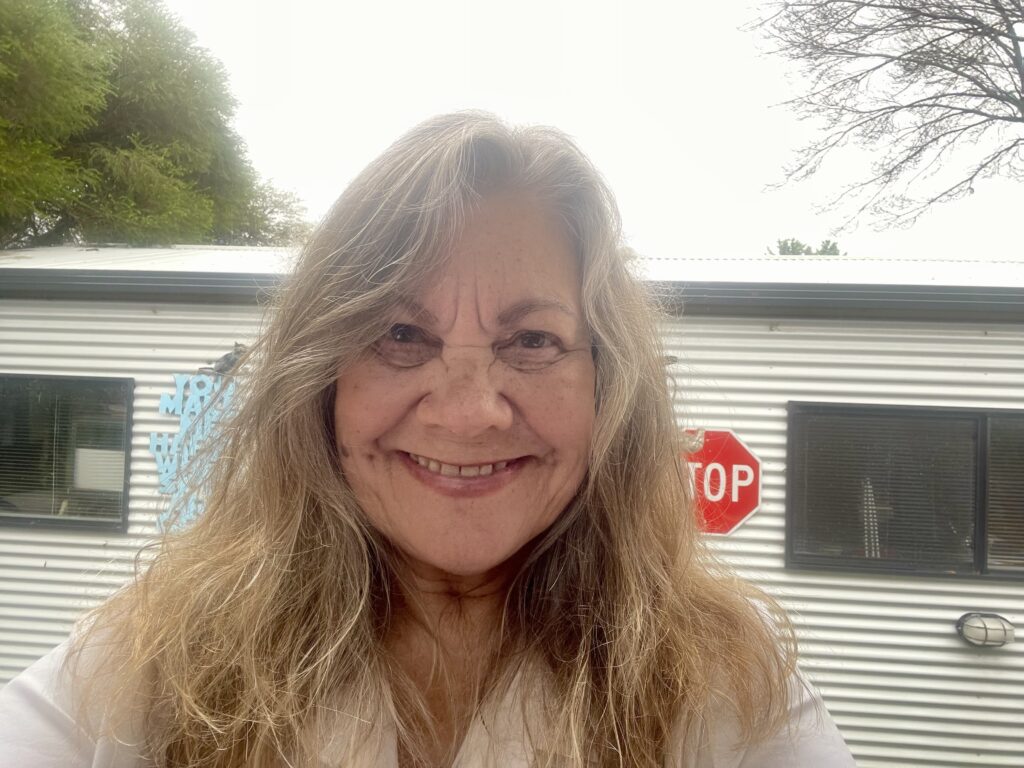
Sandra – Multi-Disciplinary Artist & Teacher
Sandra, a renowned regional First Nations artist and Stolen Generation survivor, speaks passionately when she remembers her years of teaching art across Western Australia. Drawing from her own family’s painful history – shared by her sister, mother, aunty, and grandmother across multiple decades – she intimately understands how art can give voice to the voiceless. As the former director of the Aboriginal art program at Curtin University and a longtime regional workshop facilitator, she’s witnessed how art becomes a sanctuary for those struggling to express themselves.
Throughout her career, Sandra has developed innovative approaches to break down psychological barriers that often prevent people from engaging with art. “We’re psychologically bound to thinking we aren’t good enough,” she explains. Her workshops begin with simple exercises designed to free participants from self-judgement. In one activity, everyday objects become inspiration for collaborative artworks, with participants moving between different pieces, gradually letting go of their fears about ‘not being good enough.’
Sandra’s teaching methods challenge conventional thinking. She might ask students to paint landscapes using unexpected colours – creating pink rivers and yellow skies – or guide them to create artworks using meaningful words found in newspapers. These exercises are about breaking down mental barriers and finding new ways to process emotions. “It’s all about getting them out of their head space,” she explains.
Drawing from her own experiences of loss of identity through the Stolen Generation, and becoming a single mother who found solace in art during difficult times, Sandra encourages her students to incorporate their personal stories into their work. “When I was down and out, art got me through,” she shares. “That’s what I’ve wanted to do with my own students – help them find that same healing.” Through her work across regional Western Australia, she’s created spaces where art becomes more than just creative expression – it becomes a tool for mental health and community healing.
*Sandra’s painting is the feature image of this article, representing her family’s trauma of living through the Stolen Generations.
Asta – Doll-maker
From her sprawling three-acre property, Asta crafts dolls with a tenderness that borders on maternal devotion. Each creation is uniquely conceived, from their hand-painted eyelashes to the delicate veining that makes their vinyl hands and faces appear startlingly lifelike. “They’re like babies to me,” she says, holding one of her dolls, whose creation consumed two weeks of meticulous attention.
Diagnosed with ADHD and autism in her 60’s, Asta found in doll-making not just an artistic outlet, but a form of meditation for her mental health. The process demands focus – drawing individual strands of hair can take up to fifteen hours – yet she describes these moments of intense concentration as deeply peaceful. “I find myself in complete silence while working on the hair. There’s something sacred in that solitude.”
Her work carries deeper resonance too. She crafts dolls for those touched by loss, including a particularly poignant piece for a mother who lost her child to domestic violence. Through her involvement with a death and dying support group, she’s witnessed how dolls can offer tangible comfort to the grieving. “One woman told me holding the doll felt angelic,” she recalls.
While some might dismiss doll-making as merely a craft or keeping a doll as something only for children, Asta sees the creation and support of a doll as both art and healing. In giving life to her doll-making, she’s found a way to process her own late-in-life autism diagnosis, channel her profound empathy for children, and create something that brings both herself and others genuine joy.
Nicky – Theatre Director
As a mother in regional Australia, Nicky recalls being told bluntly: “Get your kid into sports or they’ll end up doing drugs” – a sentiment echoed across many rural communities where sports dominate community life and arts are often seen as the underdog.
Nicky is a successful theatre director, having started performing at the age of 15. Throughout her life, theatre has provided her with a powerful path to wellbeing and connection. When directing ‘Little Women’ in regional WA, she found an unexpected path through the grief of her dying aunty. During the production her aunty battled cancer, and the play’s themes of mortality began to mirror the reality she was experiencing.
When her aunty passed away during the rehearsal period, the production space became a place where she could process her emotional pain. Working with a local actress who played the role of the mother (Margaret ‘Marmee’ March), Nicky guided her to access genuine grief, encouraging her to imagine the unimaginable – the loss of her own child.
The result was transformative. During a musical number, the actress’s voice broke with raw emotion, barely able to form the words. “It was one of the most powerful things I’ve seen,” Nicky recalls. The performance reduced both cast and crew to tears.
In a touching tribute on performance night, Nicky kept a seat reserved with her aunty’s picture during the show’s run.
For Nicky, theatre’s power lies in its demand for vulnerability and authentic expression. “You can’t push mental health down. You have to process it to perform. You have to be vulnerable and express it,” she explains. The experience creates an intimate bond among cast members, forged through shared bravery and emotional openness.
The impact extends to cast, crew, and to the audience, who all become witnesses to the collective emotional journey, creating a supportive community in the process. “Everyone has their arms around you in that moment,” Nicky reflects.
Today, Nicky continues to explore emotional depths through her work, currently directing ‘Other Desert Cities’ – a play that delves into family secrets and dynamics. “It’s about unpicking who we are as people within a family,” she reflects, “and realising that being honest is the only way to build connection.”
Martin – Stone Carver
After decades of studying human behaviour – first as an engineer turned mental health professional, then running adventure therapy programs in New Zealand and teaching psychotherapy in Perth – Martin, a former board member and Chair of Mindful Margaret River, stumbled upon an unexpected path to healing through stone carving. What began as a simple home renovation project evolved into something that would reshape his understanding of community healing and personal growth.
As the founder of a stone carving group in Margaret River, Martin has found more than just artistic expression. “There’s a meditative quality to it,” he explains. “It’s hard to describe the joy that I experience when we gather to work together. We mostly work on our own individual pieces, but there’s still a sense of collective goals – to learn, to support, and to create together.”
In his workshop, the rhythmic tap-tap-tap of mallets on chisels creates a meditative symphony. Martin finds it relaxing to lose himself in the metallic percussion. “The sharp strike of metal on metal, then stone dust falling like snow, all while other sculptors work nearby. I stop thinking and just let the stone guide me, one cut at a time.”
Through his stone carving practice both in regional Western Australia and in France – where he spends half the year, he’s created spaces where others can experience the therapeutic benefits of carving, building communities united by their passion for stone work.
“It’s easy to think of us as artists, and simply creating art.” Martin reflects. “But in fact, it’s much more complicated and much richer than just that. We build our sense of identity through the social construction of being artists. We find meaning in creating and knowing that others will view what we have created. We build communities. And most importantly, when we work in groups, we have coffee breaks and chat. Art at its best is a wonderful medium for the development and maintenance of social and emotional wellbeing.”
Posted in Stories.

